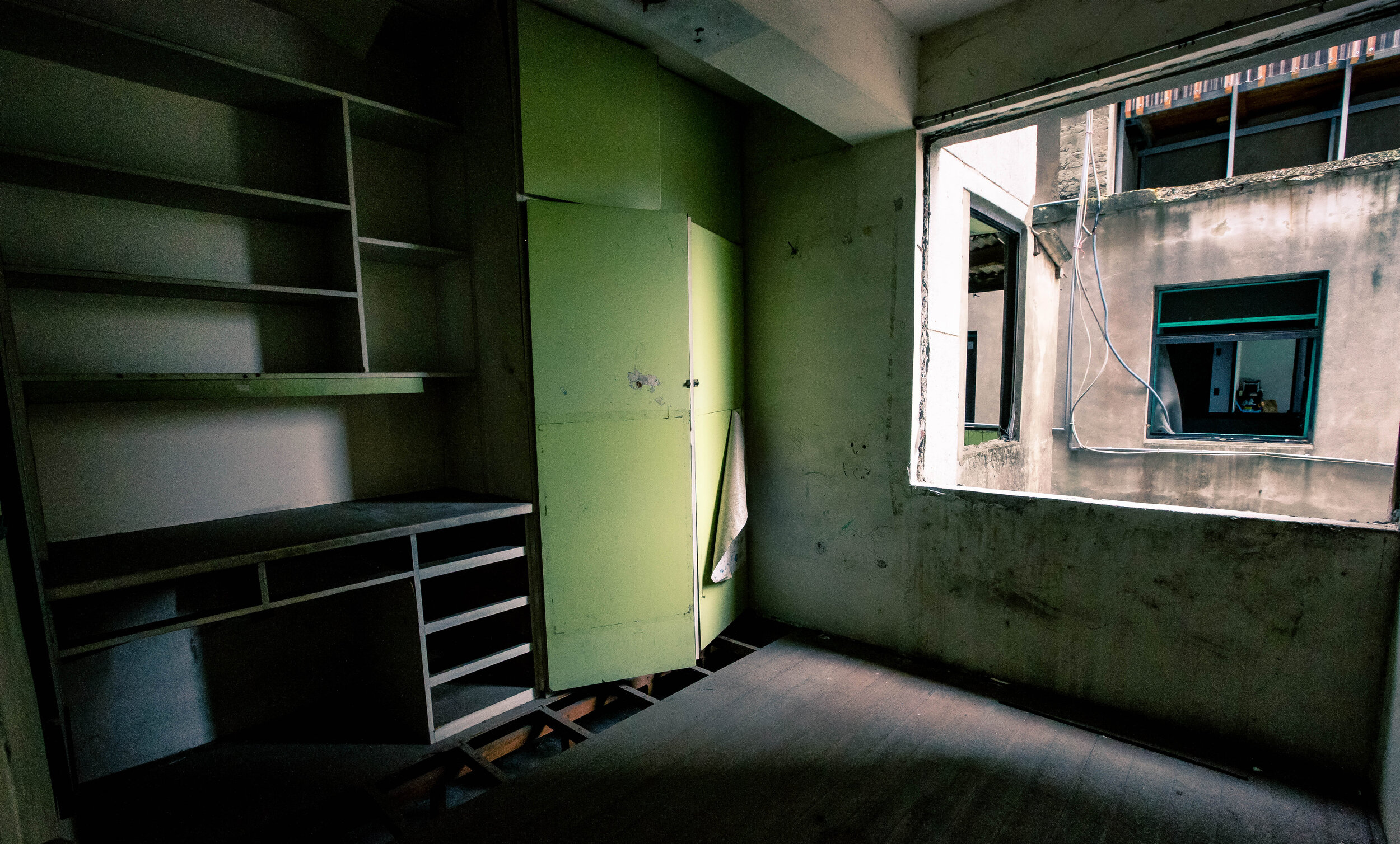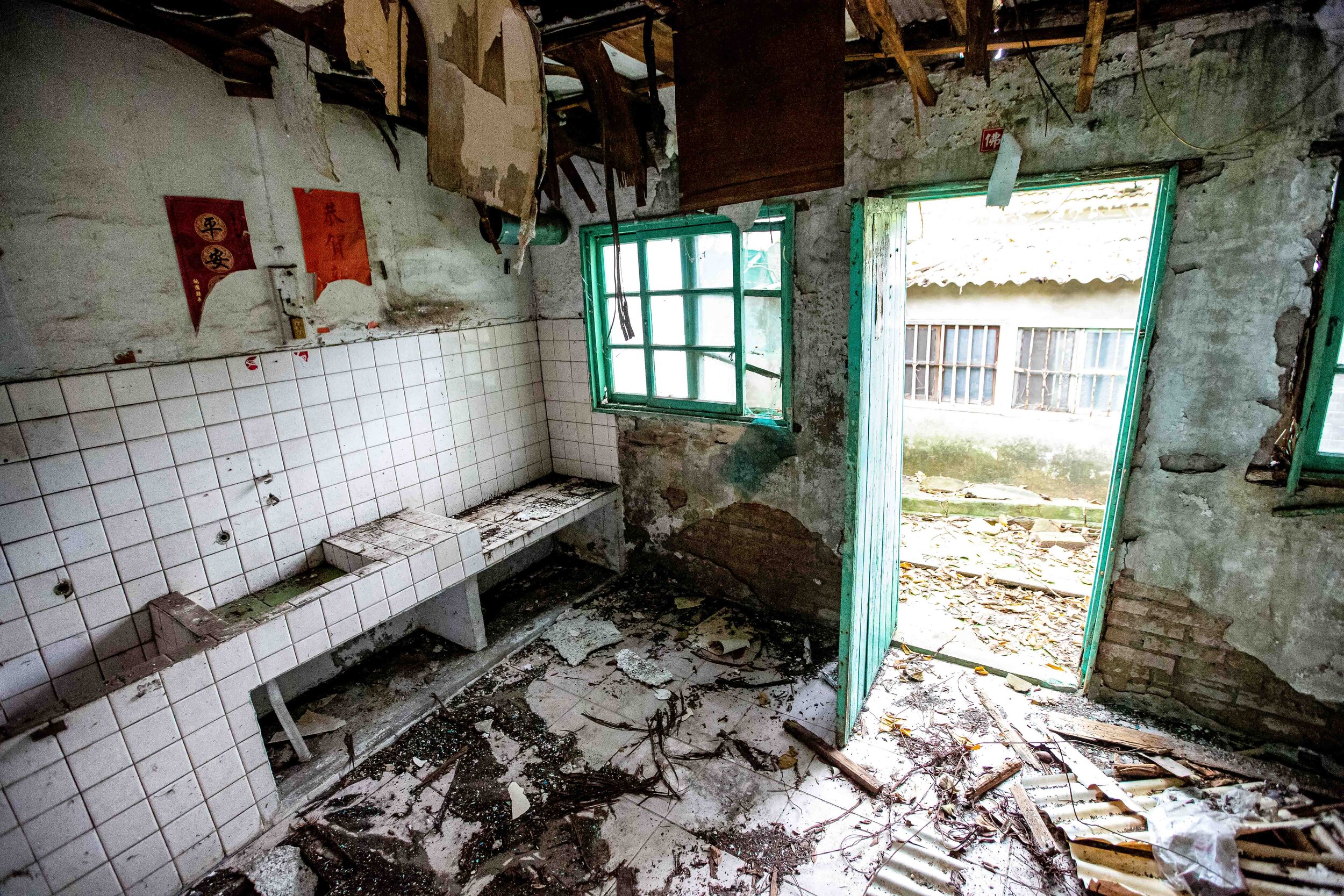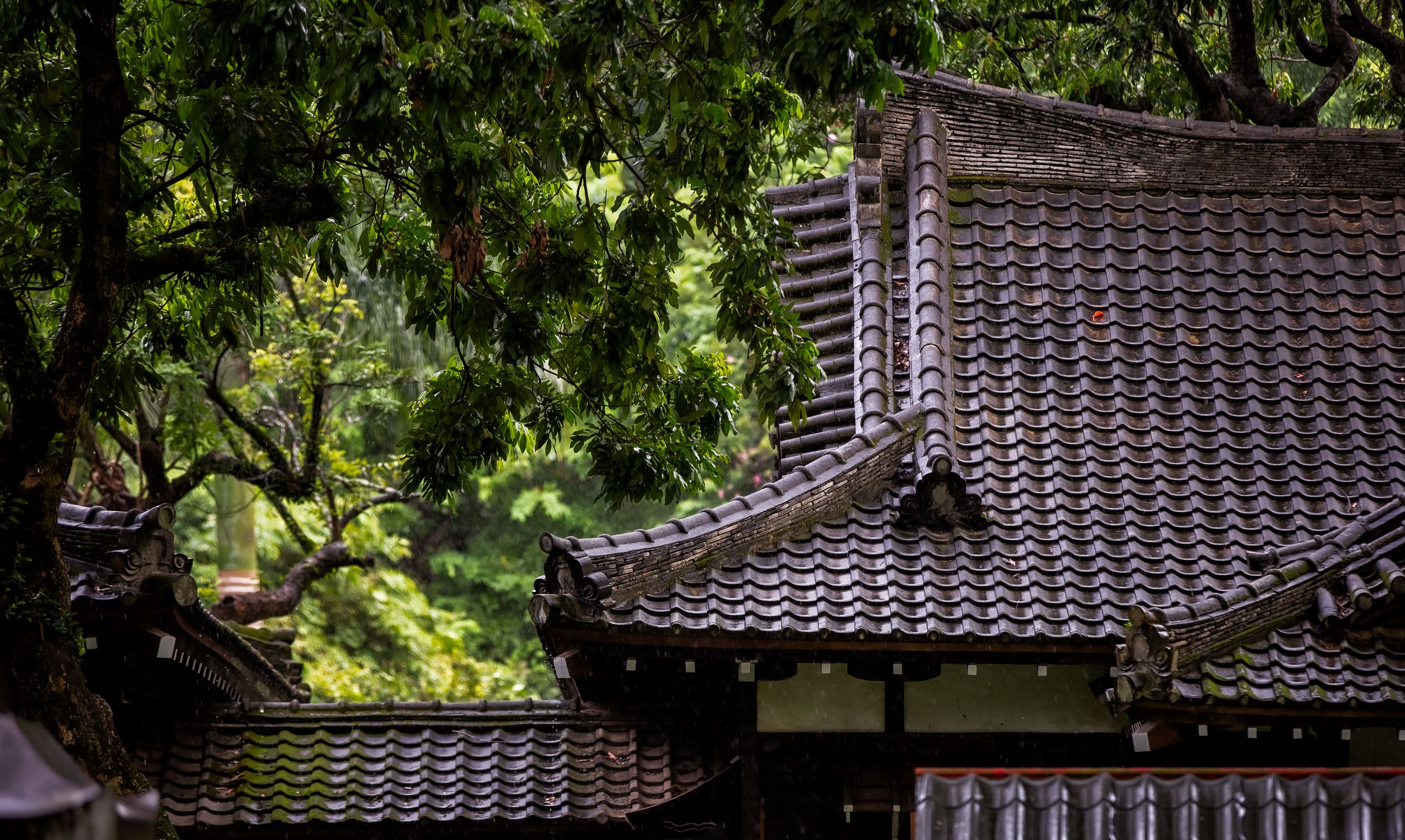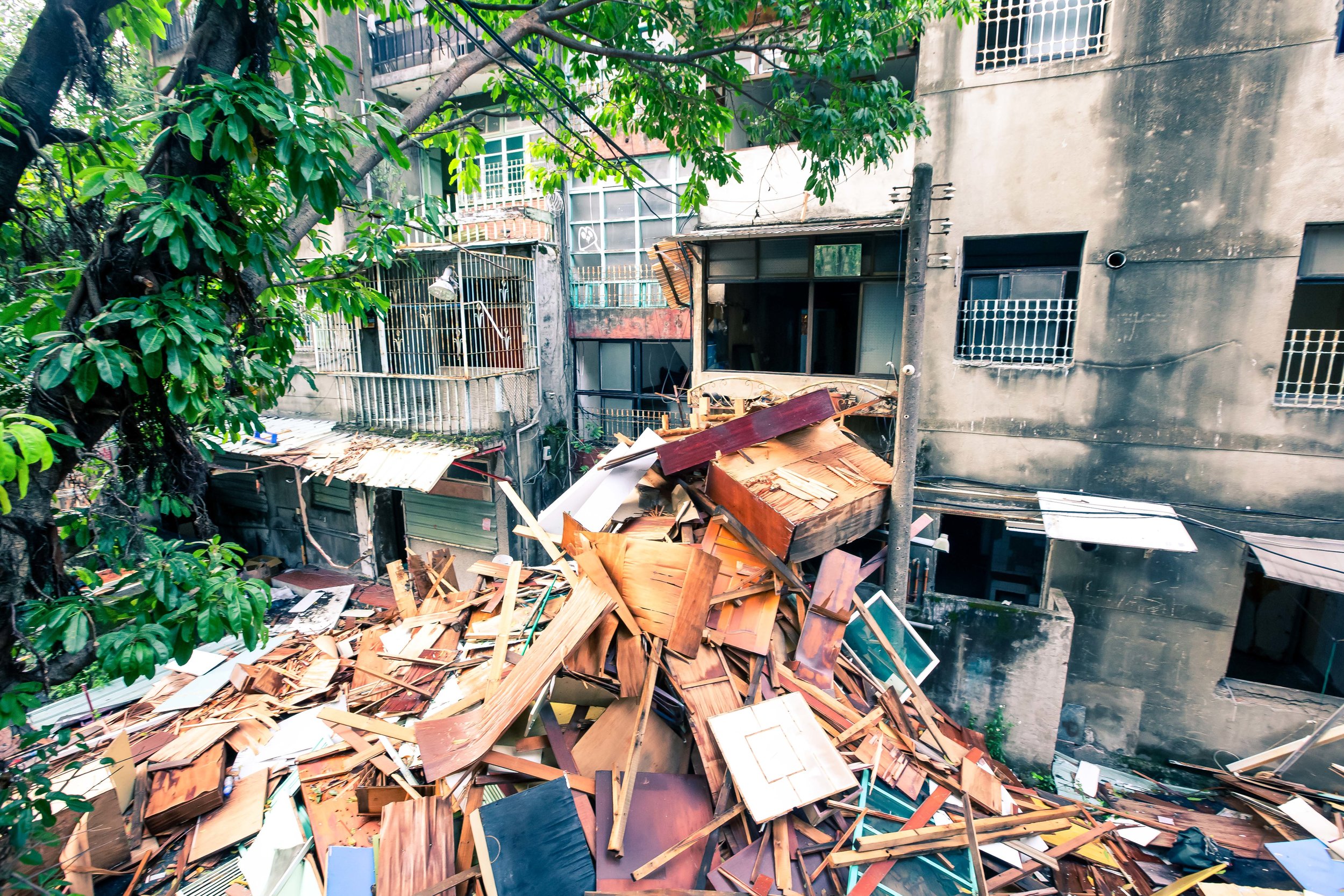One of the most unfortunate aspects of Taiwan’s modern history is that even though it is (for the most part) well-recorded, it hasn’t been very well preserved. What I mean by this is that while history books have lots of information, they mostly just feature diagrams instead of photos as sadly, many of the historic places of interest around the country have long since vanished.
One of the main reasons for this lack of preservation is that ‘history’ is often dictated by those in power and when you’ve been colonized as many times as Taiwan has, it shouldn’t really be surprising that much of what once existed has already been torn down, most often to better suit the interests of those in charge.
Its all too easy to make scapegoats of the Japanese and the Chinese Nationalists for the damage they caused, but even today, decades after the country has transformed into one of the most stable democracies in Asia, places of historic value continue to disappear, now though, its due to modern development.
Such is the case that it doesn’t particularly matter if something was constructed by the Spanish, the Dutch, the Qing, the Japanese or the Chinese Nationalists - its open season if its considered to be in the way.
Fortunately there are vocal civic groups all over the country that are determined to protect Taiwan’s cultural and historic assets by any means necessary - This doesn’t mean that they always win, but the work these groups are doing now is helping to preserve important pieces of Taiwan’s history for future generations.
The government has likewise started taking a more proactive approach to the preservation of (some of) Taiwan’s historic properties. In recent years a considerable amount of public funds have been allocated for the restoration and repair of many of these places of interest. Sadly though, these projects don’t seem to be funded equally with poorer areas having a hard time keeping up.
If you’ve been around for the past few years, you might have noticed that many former buildings constructed during the Japanese Colonial Era have been (or are in the process of being) restored and likewise several of Taiwan’s former Military Dependents Villages have been brought back to life with initiatives to convert them into tourist attractions.
I may be somewhat partial, but as far as I’m concerned, there are few places in Taiwan where those efforts have been more obvious than here in Taoyuan. The local government has spent a considerable amount of money renovating and restoring buildings of historic and cultural value.
Taoyuan, which has a reputation as an industrial area, was actually at one time better known for its high concentration of these ‘Military Villages’ and was home to a large portion of Taiwan’s new immigrant population when the Chinese Nationalists fled here after 1949. Only a handful of these villages currently remain though, so the fact that a ‘rich’ area of Taiwan has only committed to saving three of these villages goes to show how dire the situation can be with places of historic significance.
The three military villages that were lucky enough to be preserved in Taoyuan include Mazu New Village (馬祖新村) in Zhongli, Dawu New Village (大武新村) in Daxi, and Xianguang Second Village (憲光二村) in Guishan. Each of which is currently run under the ‘Military Village Iron Triangle’ project funded by the city government. So far though, only Mazu New Village has been completely restored and reopened the public while the other two are currently undergoing restoration with their official opening dates to be determined within the next few years.
Link: The Taoyuan ‘Military Village Iron Triangle’ (桃園眷村鐵三角)
The topic of today’s blog post is Guishan’s Xianguang Second Village, which is located a short distance from the downtown core of Taoyuan District. The restoration project on the village started around the end of 2019, but in the few years prior to that, it was opened to the public on a trial basis a few days a week to allow people to check out what the village looked like and learn about its history.
That being said, in its current state there really isn’t much for most visitors in terms of things to see, learn or enjoy - So if you live outside out Taoyuan, I don’t think a visit to the village is worth a day trip.
If you’re here because you saw a cool-looking photo on Instagram, you might want to reconsider and wait until it officially opens within the next year or two.
You probably know that I’m a bit weird by now though, so I made sure to visit the village a couple of times before the restoration project started. The reason for this was not because I wanted some cool instagram photos, but because I wanted to document the condition of the village before construction workers started tearing it apart.
The photos I’m sharing today in this post are meant to show the village in its abandoned condition before it reopens, which means that you can expect an update to this post a few years from now when it reopens to the public looking new and shiny.
Before we talk about the village though, lets take a minute to talk about what Military Villages are:
Military Villages (眷村)
When the Chinese Nationalists retreated to Taiwan at the end of the Chinese Civil War (國共內戰) they brought with them over two million refugees, who were in quick need of places to stay.
Most of the people who were able to make the journey from China could only do so because they were part of the social elite or members of the Republic of China Armed Forces.
The new arrivals learned quickly that the government clearly wasn’t prepared to house them, so plans were made to hastily construct shoddy villages which would serve the purpose of 'temporarily' housing them until they could triumphantly return to their homeland when the communists were defeated.
Or so was the plan..
The villages which are known as Military Dependents' villages (眷村) were constructed all over Taiwan in the 1940s and 1950s for members of the military and their families.
The Nationalist dream was that they would only retreat to Taiwan and ‘regroup’ for a short time in order to retake China from the communists. Unfortunately that would never come to pass and these so-called 'temporary' villages became 'permanent' settlements for the less privileged of those refugees.
The villages though ended up becoming important centres for the preservation of traditional Chinese culture, art, literature and cuisine and many of Taiwan’s older generation grew up in them.
Despite the refugees receiving preferential treatment from the government, the homes were sloppily put together and were property of the state, which meant that the tenants had no possibility of land ownership.
Over the years the tenants did their best to improve their living situations but as Taiwan's economic miracle was taking place, villages started to become abandoned as people sought a better, more comfortable life elsewhere.
Link: Military Dependents’ Villages (Wiki) | Military Villages (Spectral Codex)
As more and more of the homes were abandoned and left to the elements, the conditions at these villages became an contentious issue of public debate as it seemed that those who remained were living in government-owned slums. The government thus decided to improve the public-housing situation and tear down the majority of the villages, which would be replaced with modern high-rise apartments.
In recent years though, the people of Taiwan have taken interest in the preservation of the remaining villages and several civil groups have been set up to protect them. These groups have become somewhat of a thorn in the side of the government and (in some cases) the public pressure they have applied has forced the government to come up with alternative plans.
Unfortunately, the future of many of Taiwan’s remaining Military Communities is still undecided - with almost 90% of them having already become a faded memory. Its important that the few that remain are preserved to ensure that these important pieces of Taiwan’s history are preserved for the enjoyment of future generations.
Xianguang Second Village (憲光二村)
Xianguang Second Village was constructed in 1968 (民國57年) and was the only Military Dependents Village in Taoyuan that was built solely for the housing of the Military Police (憲兵).
Note: The first character in “憲兵” is “xiàn” (憲) which is where the name for this village comes from. Military Police - “憲兵” (xiàn bīng). Xianguang - “憲光” (xiàn guāng)
When the initial construction was complete, the village was home to about fourteen narrow rows of homes that were interconnected with each other housing over 100 families.
The homes were constructed in the typical ‘military village’ style that was common throughout Taiwan, which meant that the space inside was limited and that families lived together in close quarters with little to no privacy.
Later in 1973 (民國62年), a block of four story high rise apartments was added and provided space space for an additional 40 families. The fact that this village showcases both the basic single-floor cramped ‘Military Village’ style of architectural design with the addition of a more modern style, allows it to stand out from the others in terms of what you’ll see when you visit.
As was the case with pretty much every other military village constructed around the country, people eventually got tired of living in such small (and poorly constructed) residences that they eventually opted to instead make the most of the Taiwanese economic miracle and purchase their own homes elsewhere.
In 2006, after all of the residents of Xianguang Second Village had already vacated the village, the government designated it as a historic property and started coming up with plans to preserve the site for future use and its inclusion into Taoyuan’s Military Village culture network.
In the thirteen years since, not much has happened at the village, but as I mentioned above, the restoration project to bring the village back to life has only just started, so it looks like the future of this quaint little village is looking quite promising and will be an attractive destination in the near future!
Visiting the Village and Future Plans
Xianguang Second Village opened to the public a few years ago, under the Taoyuan City Government’s “Military Village Culture” initiative but when it first opened, public visits were limited to only two days a week and most of the village was off-limits. In the few years since, they gradually increased the amount of days that people could visit as well as planning a number of activities in order to attract more visitors.
I visited a few years ago when the village first opened to the public and unfortunately arrived only about an hour before they were about to close. I figured that would be enough time to check it out, but when the staff saw me wandering around they decided to approach me and ask if I needed help or a free tour.
I ended up having a long conversation with the friendly ladies who work there but unfortunately that didn’t leave me with much time to take photos as they chatted me up until closing time.
Unlike Mazu New Village (馬祖新村) in nearby Zhongli, this village has yet to receive much attention in terms of fixing it up to make it look nice or giving it much promotion. So when people visit, especially foreigners, the staff get really excited.
As part of the Taoyuan City Government’s ‘Military Village Iron Triangle’ (桃園眷村鐵三角) mentioned above, it seems like this particular village had to wait in line (for funding) behind the renovation projects on Mazu New Village and Dawu New Village before it got its turn.
In November 2019, the long-planned three-year renewal project finally started at the village, which will see many of the buildings within completely renovated and transformed into a museum. From what I’ve read, the museum will be dedicated to ‘immigration’ in addition to being used as a space for various events, exhibitions and learning about the history of Taiwan’s Military Villages.
Knowing that the village would undergo this period of renewal, I thought it was best to make an effort to visit and get photos of what the village looked like before work started. Given that I have an interest in urban exploration and exploring places with historic value, it was nice to be able to freely explore the abandoned military village to see what the homes were like in their dilapidated and lived-in states.
I also knew from experience with the Mazu Village in Zhongli that once renovations started, it would difficult to gain access to any of the older buildings.
Suffice to say when it comes to the future plans, all that has been mentioned is that the military village is slated to will become the ‘Xianguang Second Village Immigration Museum’ (憲光二村移民博物館) around 2022 and will focus on the modern history of immigration in Taiwan, especially with respect to all of the military villages in Taoyuan and the diverse ethnic groups of refugees who came here when the Nationalists lost the Chinese Civil War.
I may seem like a broken record by now, but I’m guessing that the situation will be similar to what happened at Mazu New Village with the majority of the village being beautifully renovated and opened to the public with coffee shops, art displays and weekend activities on-site.
Only one of the buildings ended up being reserved to become the Taoyuan Arts Cinema (桃園光影電影館), so if I’m right, the actual ‘Immigration Museum’ will probably just be a permanent exhibition in one of the buildings while all of the others will be opened for tourism or commercial activities.
Whatever the future holds, I hope that once the renovation project is completed and the village is reopened that whatever they plan to do with the space is well thought out and that it will be put to good use.
As it is, sections of the village will remain open to the public as the renovation project is underway but it should be obvious that if you plan on visiting before the official re-opening, you’ll be going at a time when there will be quite a bit of construction work going on at the same time.
Getting There
Address: Lane 138, Datong Road, Guishan District, Taoyuan City. (桃園市龜山區大同路138巷)
Xianguang Second Village is located just outside of Taoyuan and is a short distance from the train station - It is a bit of a distance though, so if you’re heading into town and you don’t have a car or scooter, you’ll probably want to take some form of public transportation to get there, instead of walking.
Taking a bus is quite simple, from Taoyuan Train Station (桃園車站) walk to the Tonlin Department Store (統領百貨) where you’ll find a bunch of bus stops to the right of the main entrance. From there get on Bus #137, which (should) come every fifteen to twenty minutes. You’ll want to stay on the bus until you reach the Datong Bus Stop (大同路口) where you’ll get off and walk down the hill to the village.
You could also easily take a YouBike from the Taoyuan Train Station and park it at the village when you get there, or simply returning it at one of the Youbike stations nearby.
The village is open to the public every week from Wednesday to Saturday (closed on Sundays / Mondays and Tuesdays) from 9:00 - 12:00 and 1:00 - 5:30.
I would caution you though that in my experience, the hours of operation are quite fickle and once they start the renovation project, it is likely going to much more difficult to visit the village.
If you plan to visit Taoyuan just to check out this village, I highly recommend that you call first to confirm whether or not the village is actually even open to save yourself from disappointment.
Phone number: 03-319-7132
While you’re in the area, I also recommend taking some time to visit the Taoyuan Confucius Temple (桃園孔廟), Taoyuan Shinto Shrine (桃園神社) and exploring the Tiger Head Mountain (虎頭山) area which are all a short distance away from the village
The popularity in recent years for the renewal of historic properties like Huashan (華山), Songshan Tobacco Factory (松菸) and Mazu New Village (馬祖新村) as new cultural villages for art and design has most certainly been a welcome turn of events.
The problem though is that when the rebranding of these villages isn’t well thought out, it makes for a situation where the staff struggle to attract visitors. Over the past couple of years I’ve visited this village on a few different occasions and got the feeling each time that the staff are dedicated to the promotion of the village and its future and (even though they were a bit chatty), they’re always excited to have guests.
Keeping in mind that the village is currently undergoing a renovation process similar to what happened at Mazu Village in Zhongli, I expect that some of these issues will be resolved when the village officially reopens in the next few years.
When it does reopen, I hope that I’ll be able to visit again to get photos of the renovated buildings and how they’ve gone about making it more attractive for visitors.


































































